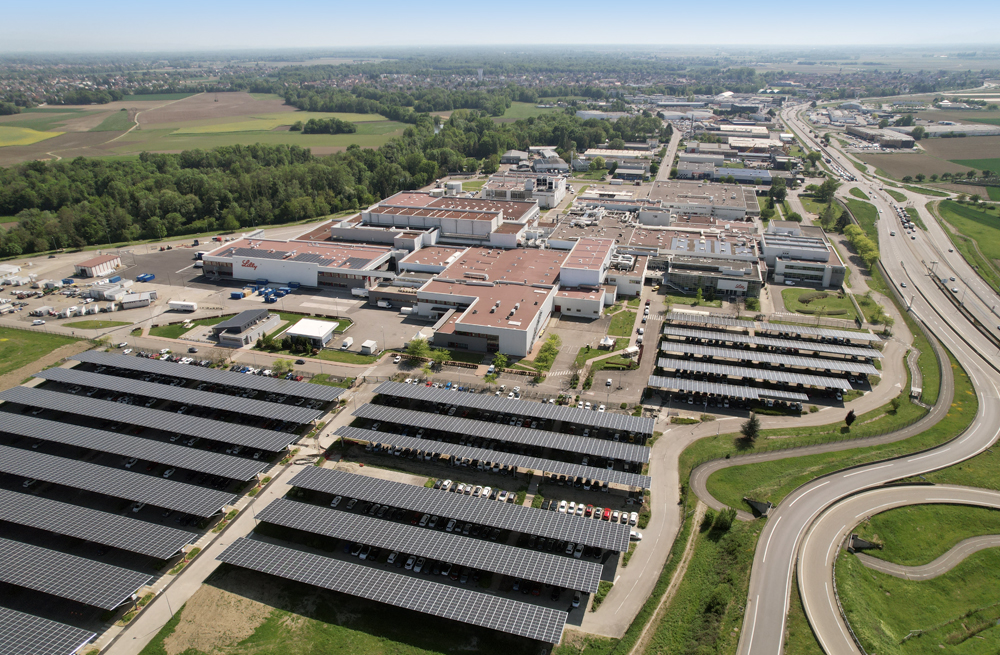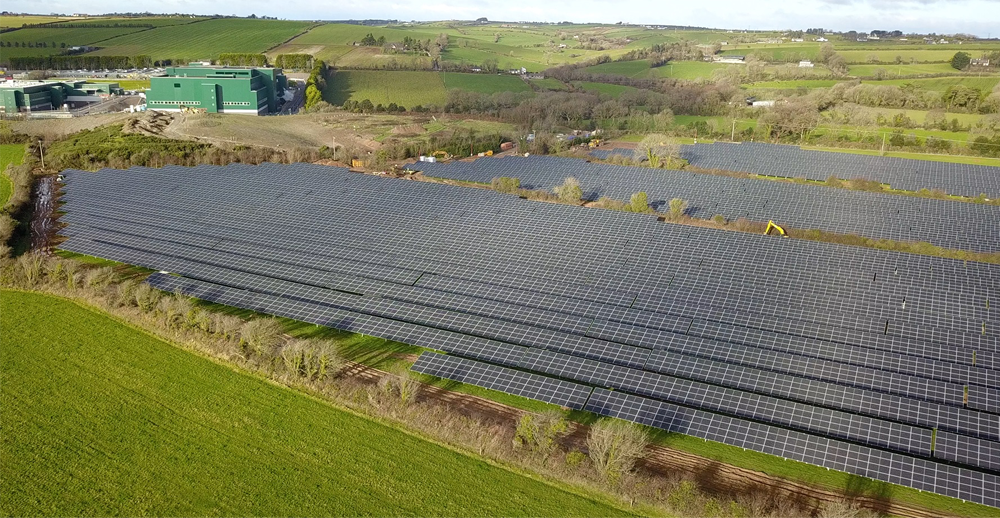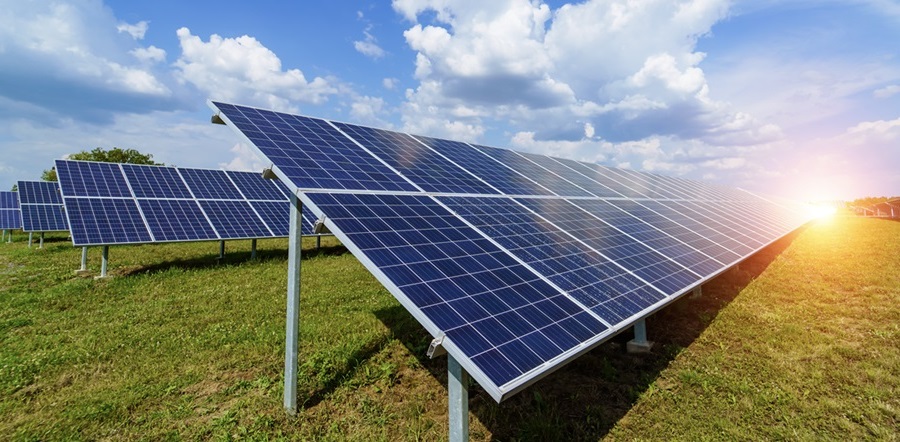Climate
Management Approach
Lilly acknowledges that climate change is negatively impacting human and environmental health. Action against climate change is required to achieve the goals of the Paris Climate Agreement and to avoid the most detrimental effects of climate change by limiting the global temperature rise to 1.5 °C. Lilly is taking action to reduce greenhouse gas emissions within our operations and along our value chain. We have assessed our Scope 3 emissions and progressed in our journey to identify climate-related risks and opportunities in our business.
As a global medicine company, we recognize our responsibility to reduce our carbon footprint and manage climate-related risks and opportunities to do our part. Lilly supports the Paris Climate Agreement, discloses information according to recommendations of the Task Force on Climate-related Financial Disclosures (TCFD) and strives to implement these recommendations across the TCFD categories of Governance, Strategy, Risk Management and Metrics & Targets. For more information, see our TCFD metrics.
As Lilly continues to expand its global presence and innovate in the pharmaceutical sector, we recognize the importance of aligning growth with our sustainability goals. Our projected growth trajectory entails careful consideration of its impact on our carbon footprint, resource consumption and waste generation. At Lilly, we are committed to implementing a range of initiatives to advance environmental sustainability across our operations and value chain. This includes initiatives to enhance energy efficiency across our operations and investments in renewable energy sources to reduce reliance on fossil fuels and decrease greenhouse gas emissions. These efforts are aimed at reducing environmental impacts while fostering sustainable business growth.
2030 Climate Goals and Our Progress to Date
Lilly is committed to reducing our greenhouse gas emissions, and prioritizing energy efficiency to become a more climate-resilient organization. We have set climate goals for 2030 as we work toward contributing to a low-carbon economy:
Secure 100% of our electricity from renewable sources
Through the end of 2024, 58% of our electricity demand – 399,000 MWh – came from renewable sources.
We are focusing our efforts on securing renewable electricity using a three-pronged approach:
On-Site Generation: The first, and most effective effort, is implementing direct renewable electricity through on-site solar installation. We have established on-site solar arrays at our sites in the United States, France, Ireland, India, Italy, Spain, China and Puerto Rico. We aim to expand our use of on-site solar generation where possible at existing sites and implement on-site solar arrays at our new manufacturing sites as we expand our footprint to support business growth.
Purchased Renewable Electricity: We are actively purchasing renewable energy from our utility providers across numerous sites globally.
Renewable Energy Certificates (RECs): We also purchase renewable energy certificates (RECs) that support clean energy generation in certain regions where we operate. Our REC purchases align with globally recognized standards, such as the Greenhouse Gas (GHG) Protocol guidelines, ensuring credibility and regional environmental benefits.
Recent Achievements
Reducing Energy and Emissions
In 2024, our energy consumption increased compared to 2023 due to the start-up of new Lilly manufacturing facilities and increased manufacturing production at existing sites. Although our energy consumption increased, we were able to reduce our carbon emissions by transitioning to cleaner and more efficient technologies that help reduce greenhouse gas emissions associated with this energy. We continue to emphasize energy efficiency at our facilities, including:
Utilizing Leadership in Energy and Environmental Design (LEED) principles as a framework for healthy, efficient and more sustainable buildings in new and updated facilities, facilitating the use of advanced energy monitoring and control solutions, conducting energy assessments, and evaluating and incorporating alternative energy sources.
Participating in local, regional and national forums to understand and integrate energy management best practices, and to support responsible and cost-effective decision-making and policy development. Examples of participation include the U.S. Environmental Protection Agency’s ENERGY STAR Pharmaceutical Focus Group, the Association of Energy Engineers, and the American Society of Heating, Refrigerating, and Air-Conditioning Engineers.
Providing an Energy, Waste and Water Reduction Fund which provides capital funding to encourage projects that demonstrate the greatest potential for reduction in energy consumption, greenhouse gas emissions, waste generation or water consumption. Projects supported by this fund have led to meaningful energy efficiency improvements and reductions in greenhouse gas emissions each year.
Actively recognizing innovation and excellence in Health, Safety and the Environment (HSE) management by granting annual HSE awards. Nominations represent a significant accomplishment, and the awards recognize our employees for helping Lilly achieve energy and greenhouse gas emissions reduction goals and other HSE improvements. Projects are also assessed on their potential to scale in other areas across the company.
Reducing Emissions through Cleaner Energy
We continue to evaluate how to improve our energy resiliency and expand our use of renewable electricity consistent with our goal to diversify our energy sources and decrease our greenhouse gas emissions over time.
Off-Setting through Carbon Removal Projects
While our primary strategy is to directly reduce emissions and replace carbon-intensive sources with clean energy sources where possible, to achieve carbon neutrality we recognize the remaining emissions will need to be offset by purchasing carbon offsets from climate protection projects with recognized quality standards. To date, we have not purchased any carbon offsets. The decision to purchase offsets will be made based on the remaining emissions that cannot be eliminated. Information related to our California Voluntary Carbon Markets Disclosure (AB 1305) can be found here.
Climate Performance Data
Greenhouse Gas Emissions (Market-Based)¹
|
2020
|
2021
|
2022
|
2023
|
2024
|
|---|---|---|---|---|---|
|
Scope 1
|
2020:
159,000
|
2021:
157,000
|
2022:
171,000
|
2023:
182,000
|
2024:
192,000
|
|
Scope 2
|
2020:
551,000
|
2021:
466,000
|
2022:
374,000
|
2023:
345,000
|
2024:
258,000
|
|
Greenhouse Gas Emissions (Scope 1 and Scope 2) (metric tonnes CO2e)2
|
2020:
710,000
|
2021:
623,000
|
2022:
545,000
|
2023:
527,000
|
2024:
450,000
|
|
Emissions intensity (Scope 1 and Scope 2 Market-Based greenhouse gas emissions per US dollar of revenue)2
|
2020:
0.000029
|
2021:
0.000022
|
2022:
0.000019
|
2023:
0.000015
|
2024:
0.000010
|
Value-Chain Greenhouse Gas Emissions
|
2020
|
2021
|
2022
|
2023
|
2024
|
|---|---|---|---|---|---|
|
Scope 3 Emissions (metric tonnes CO2e)3
|
2020:
176,000 (limited data scope)
|
2021:
2,987,000
|
2022:
3,179,000
|
2023:
5,139,500
|
2024:
6,174,000
|
Energy
|
2020
|
2021
|
2022
|
2023
|
2024
|
|---|---|---|---|---|---|
|
Total Energy Consumption (million BTUs)
|
2020:
6,200,000
|
2021:
6,100,000
|
2022:
6,130,000
|
2023:
7,240,000
|
2024:
7,293,000
|
|
Direct Energy Consumption (million BTUs)4
|
2020:
1,700,000
|
2021:
1,600,000
|
2022:
1,950,000
|
2023:
2,910,000
|
2024:
2,964,000
|
|
Indirect Energy Consumption (million BTUs)5
|
2020:
4,500,000
|
2021:
4,500,000
|
2022:
4,180,000
|
2023:
4,330,000
|
2024:
4,329,000
|
|
Renewable Electricity
|
2020:
7.0%
|
2021:
9.6%
|
2022:
14.4%
|
2023:
28.4%
|
2024:
58.3%
|
Climate Goals
|
2030 Goal
|
2024 Performance
|
|---|---|---|
|
100% Renewable Electricity
|
2030 Goal:
100%
|
2024 Performance:
58.3%
|
|
Carbon Neutral (Market-Based Scope 1 and Scope 2)
|
2030 Goal:
Carbon Neutral
|
2024 Performance:
450,000 tonnes CO2e
|
|
Enhance Tracking and Reporting of Full Value-Chain Emissions (Scope 3)
|
2030 Goal:
N/A
|
2024 Performance:
On track
|
Footnotes
Note: Data may be revised compared to prior reports due to changes in calculation methodology and other factors. Some segments do not add up to totals due to rounding.
Note: Lilly’s 2024 Scope 1 and Scope 2 data received limited assurance by Ernst & Young, LLP (EY) and Scope 3 data limited assurance by Bureau Veritas.
Presented in alignment with Lilly’s basis of reporting for key environmental sustainability indicators. A location-based method reflects the average emissions intensity of grids on which energy consumption occurs (using mostly grid-average emission factor data). A market-based method reflects emissions from electricity that companies have purposefully chosen (or their lack of choice). It derives emission factors from contractual instruments, which include any type of contract between two parties for the sale and purchase of energy bundled with attributes about the energy generation, or for unbundled attribute claims. See GHG Protocol Scope 2 Guidance. In 2020, Lilly did not differentiate between market-based and location-based emissions calculations.
Includes Scope 1 emissions and energy from onsite fuel combustion, refrigerants, process emissions and mobile combustion sources; and Scope 2 emissions and energy from site-purchased energy (i.e., electricity, steam and chilled water). For smaller locations not billed directly to Lilly, data are estimated based on square footage.
For Scope 2, production mix emission factors from carbonfootprint.com are used to calculate emissions for all electricity usage outside the US except for Canada, UK, and Australia. The production mix emission factors account for both scope 2 and scope 3 FERA emissions, which is aligned with what was used in the 2022 inventory.
All 15 categories within the Scope 3 emissions have been assessed, assured via limited assurance and reported starting in 2021.
Data includes energy from combustion of coal, fuel oil, natural gas and liquid propane. 2023 onwards, this data also includes energy used by aircraft, sales fleet and on-site generated renewable electricity.
Data includes energy from purchased electricity, steam and chilled water.
Explore our Environmental Goals and Progress
See important information about our Sustainability report.


 Solar array at Lilly’s Carolina, Puerto Rico facility.
Solar array at Lilly’s Carolina, Puerto Rico facility. Parking canopy solar array at Lilly’s Fegersheim, France location.
Parking canopy solar array at Lilly’s Fegersheim, France location.  Solar array at Lilly’s Kinsale, Ireland location.
Solar array at Lilly’s Kinsale, Ireland location. Rooftop solar arrays at Lilly’s Corporate Center in Indianapolis, Indiana.
Rooftop solar arrays at Lilly’s Corporate Center in Indianapolis, Indiana.



